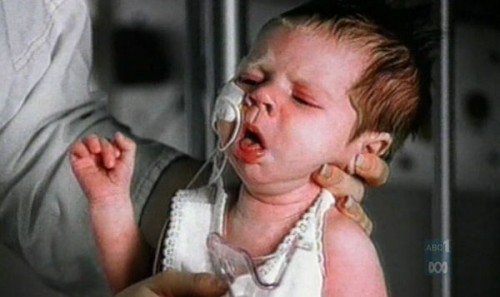Childhood Immunization: Updated 2013 guidelines
What I have been trying to say for the past couple of days, and kept getting side-tracked, is that the American Academy of Pediatrics (AAP) has just released this years immunization schedule (2013) which not only takes into account all the recent scientific studies but tries to make them understandable–as understandable as these complicated rules can be. And there are a few new indications and clarifications based on brand new research.
Boy receiving recommended immunizationFortunately, YOU don’t have to memorize them, you’ve got a pediatrician to take your children to who has gone through them and done all the work for you. There are some differences. If you want to follow along a bit here is a link to the chart and all the footnotes: 2013 childhood immunization chart.
New Pediatric Immunization Schedule, 2013
One of the good parts is that instead of having two separate schedules, for children under six and those over six, they’ve lumped them all together for children under 18. And, they’ve added columns for the 4 – 6 year and 11 – 12 year points highlighting school entry and adolescent vaccine age group recommendations.
In order to simplify the chart to the readability level the one caveat is that physicians are told to be sure and read the trailing footnotes (which take up four pages) because they contain the rationale and modifications for special circumstances. And, as in previous years, the Advisory Committee on Immunization Practices of the Centers for Disease Control and Prevention and the American Academy of Family Physicians have conveniently accepted the updated schedules as well.
The major differences that I’ve noticed are the ones that I’ll write about today. First, I noticed that a tetanus, diphtheria, and acellular pertussis (Tdap) vaccination is now given to adolescents and pregnant women (11-12yrs). That, of course, is due to new findings that the immunity from the initial series significantly wanes into adolescence and incidence of Whooping Cough (pertussis) is increasing. This should improve protection of newborns from the morbidity and potential mortality of pertussis before they can safely be vaccinated with DTaP.
For Rotavirus there are two types of serum, RV-1 and RV-5. The RV-5 serum needs a series of three doses between two and six months the RV-1 a series of two. Rotaviruses you may remember are a leading cause of deadly diarrhea in infants.
Haemophilus Influenzae type b vaccine now has a clarification. Unimmunized children who are at least 15 months of age should now only receive one dose of this vaccine.
 Pneumococcal vaccine also has a clarifying footnote to explain when to use each of the two types of serum. It lists the several medical conditions for which 13-valent pneumococcal conjugate vaccine is indicated in children aged 24 to 71 months–such as: chronic heart and lung diseases, diabetes, asthma (on steroids) and others. The criteria for use of the broader spectrum 23-valent pneumococcal polysaccharide vaccine, children at least 2 years of age, is also given – like: immunocomprimised children or other blood or spleen problems.
Pneumococcal vaccine also has a clarifying footnote to explain when to use each of the two types of serum. It lists the several medical conditions for which 13-valent pneumococcal conjugate vaccine is indicated in children aged 24 to 71 months–such as: chronic heart and lung diseases, diabetes, asthma (on steroids) and others. The criteria for use of the broader spectrum 23-valent pneumococcal polysaccharide vaccine, children at least 2 years of age, is also given – like: immunocomprimised children or other blood or spleen problems.
Meningococcal immunization now has some added use in “high risk” groups like those traveling into the African “meningitis belt,” with immunocomprimising problems and in areas where a high incidence of susceptible organisms are causing disease.
I’ve read the recommendations and perused the bibliography of studies that they’ve used in making these recommendations. I have to tell you that they read and considered a lot more studies that I was even aware had been done. We need to keep in mind that the reason recommendations keep changing is because of all the new research and developments which are occurring.
Yes, it’s becoming a bit of a burden for children who aren’t all that enamored with injections in the first place. But, there’s also a reason that none of you have ever seen an actual case of Rubella or the birth defects and other morbidity it causes. Or, that you don’t know anyone who is sterile from Mumps. Or that if any of the US hospitals ever saw a case of Polio they would have to refurbish their iron-lung from out of the basement or borrow one from some where (because no one even makes them any more.) And, on and on with the other diseases we immunize for.
Wish we had a easier, less onerous, way of “inflicting” this benefit to our kids; but, we don’t YET… and it seems like a miniscule price to pay when you consider the alternatives. Don’t you think?
6 Posts in Immunization Schedule (immunizationSchedule) Series
- CDC Disease specific immunization recommendations (printable) – 20 Mar 2023
- Immunization Links in a nutshell – 16 Jul 2015
- 2014 Immunization Schedule – 14 Feb 2014
- Birth to Eighteen – 25 Oct 2013
- 2013 Immunization Guidelines – 2 Feb 2013
- Childhood Immunization Schedule Updates: Intro/Index – 1 Feb 2013

